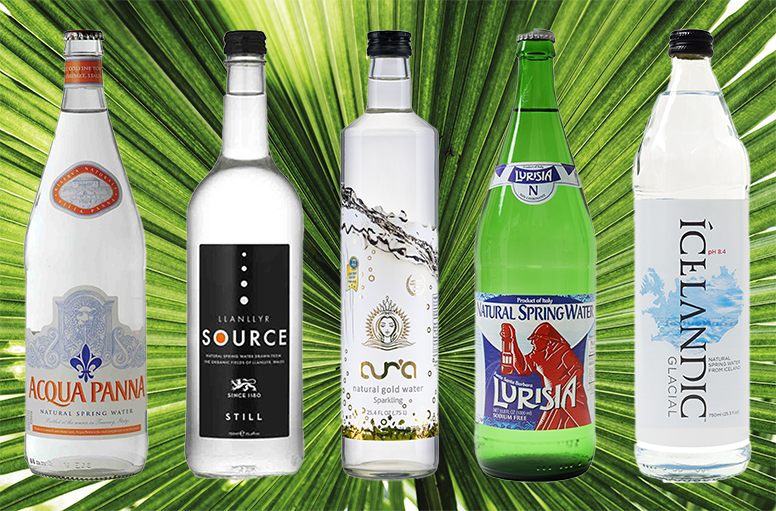A Guide to Water Tastings
Do you want to be the first on your block to hold a water tasting? Here are a few basic guidelines to follow. A water tasting is similar to a wine tasting although the threshold levels of differences are far more subtle.
FLIGHTS OF WATER
Each type of water should compete in its own category. For example, put all carbonated bottled waters in one flight, non-carbonated bottled waters in another flight and municipal tap waters in a third. Limit the tasting to 20 different waters as palate fatigue can affect the results.
BOTTLED WATER
A selection of bottled waters can be found at www.BeverageUniverse.com. Purchase enough of each brand to serve 10 ounces of each water per judge. Make sure to read the label of each bottle to determine the type of water. Beware of bottled beverages that may look like water but contain juices, flavoring and sugars.
MUNICIPAL TAP WATER
When you collect your tap water for the tasting, verify that it is from the local water supply (checking the water bill is one way to learn its source). Also make certain the location does not have any treatment devices such as water softeners, reverse osmosis equipment or activate carbon filters. A tap on the side of the building often yields water directly from the delivery lines and will give a representative sample. Do not use water that passes through a plastic hose as it will retain a strong plastic flavor.
DRAWING FROM THE TAP
Use water only from the cold tap as water heaters can alter the character of tap water. Run the cold water tap for at least one minute prior to rinsing the bottle and filling. This will clear the lines of any sediment or flavor the water might have picked up in the pipes.
FILLING THE BOTTLE
Use a clean bottle, preferably one that has been used for commercial bottled water and has not had other liquids stored in it. Fill the bottle one-third full and cap it. Shake the bottle vigorously, empty it, then fill the bottle to the top of the neck and close the cap.
STORING PRIOR TO TASTING
Try to collect the samples as close to the tasting event as possible. Once the sample is collected store it in a dark, cool place away from any petroleum, chemicals or strong smelling substances.
JUDGES
Almost anyone can judge water as long as they have a good sense of smell, sight and taste. The best time to hold a tasting is late morning before lunch or late afternoon, before dinner. One-half hour prior to the tasting, judges should not smoke, consume coffee, alcoholic beverages, spicy food or chew gum as they tend to dull the ability to taste and smell. Judges should avoid wearing strong perfume as it can interfere when evaluating the aroma of water. Judges should not talk to one another during the judging.
PROCEDURE
Judging should take place in a well lit, quiet area away from noise and distractions. Wine glasses are especially good for evaluating water and each glass should be double rinsed and hand-huffed to insure that there is no chlorine residue from washing. Waters should be tasted blind and the judges should not know the brand name or source of the samples. On paper place mats, write a number for each sample to be tasted in the flight. Six glasses per flight works well at most tastings. All samples should be tasted at room temperature. An assistant should pour about half a glass of each sample out of the judges' view. Each glass should then be placed on the corresponding number of each judge's mat.
JUDGING
APPEARANCE
The first step in evaluating a water is to perform a visual check. Observe the water to see if there are any noticeable differences from the other waters in color or other obvious defects. If the water has a color, is cloudy or has suspended particles then deduct points.
AROMA
To obtain the aroma of the water (if any), swirl it in the glass and then take three short sniffs, holding your nose directly above the water. If there are any unusual or off odors such as chlorine, plastic, sulfur or mustiness, then deduct points.
FLAVOR, MOUTH FEEL and AFTERTASTE
After swirling the water, take a small amount into your mouth. Spread the portion quickly throughout your mouth; swallow. Since a number of waters will he tasted, only a small portion of the sample need be swallowed and the remainder can be expectorated. Observe if the water has any unusual or off flavors such as chemicals, saltiness, iron, sulfur, etc. Does the water have a stale mouth feel and is there an unpleasant residue when swallowed? If so deduct points.
CARBONATED WATERS
If carbonated waters are being tasted it is important to observe the quality of the bead (or bubble) in the water. Are the bubbles aggressive or slow and random? Which tastes more pleasant? Carbonation may make a water feel brisk in the mouth and have a higher acidity. Evaluate how this adds or detracts from the taste quality.
REPORTING THE RESULTS
Use the Water Rating Sheet that follows to give points for each sample and to describe the appearance, characteristic odor, and taste quality. The Water Rating Sheets should be collected from the judges and then tallied for a final score.
From Voss Water to Fiji natural artesian water Beverage Universe can accomodate your premium water needs. Order today!
Purchase our water tasting flights so you can hold your own water tasting event.
We have options for parties of 2,5 or 10 judges.
Shop out glass bottled water brands and begin to enjoy the way water is meant to taste!
Source: The Taste of Water by Arthur von Wiesenberger The Taste of Water http://www.bottledwaterweb.com/articlesdetail.do?k=77

